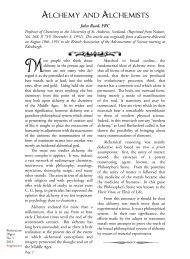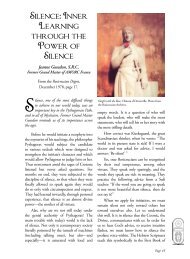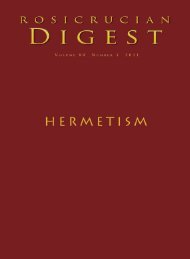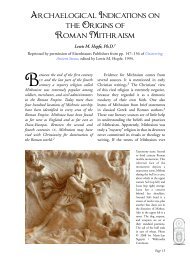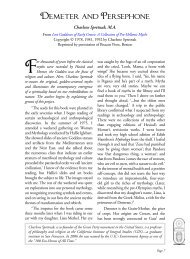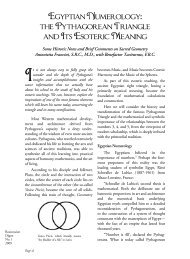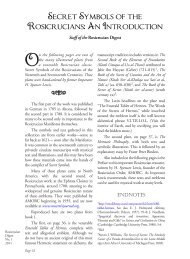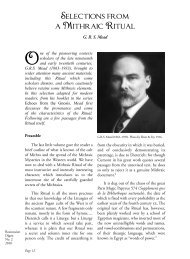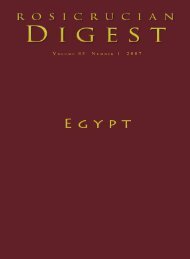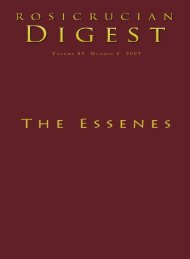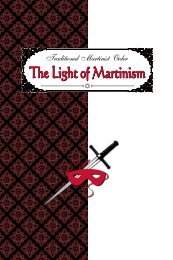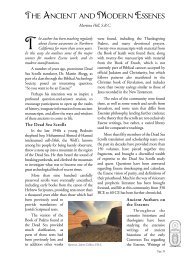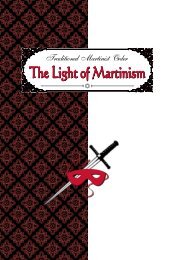The Grand Temple - Rosicrucian Order, AMORC
The Grand Temple - Rosicrucian Order, AMORC
The Grand Temple - Rosicrucian Order, AMORC
You also want an ePaper? Increase the reach of your titles
YUMPU automatically turns print PDFs into web optimized ePapers that Google loves.
6. Akhnaton is riding in his chariot in this mural. Note the<br />
natural posture of the king. Above him is seen the symbol of Ra<br />
or Aton, the sun, its rays reaching downward with hands at their<br />
ends. This depicts the creative divine power reaching earthward,<br />
bestowing life on all things and bringing forth living things from<br />
the earth.<br />
7. This mural shows bearers of gifts. <strong>The</strong>y come bringing flowers,<br />
fruits, fowl, and cattle to pharaoh. <strong>The</strong> original of this mural appears on<br />
the walls of the tomb of Tjenro, who lived during the reign of<br />
Amenhotep II, about 3,500 years ago.<br />
8. Here we see a beautiful mural called “Laying on of Hands” by<br />
its artist. It is designed after the description appearing in the June<br />
1938 issue of <strong>Rosicrucian</strong> Digest, showing how the divine essence of<br />
the gods, known as Sa, was said to be imparted by the high priest to<br />
those who knelt before him. <strong>The</strong> same form of laying-on of hands<br />
was used in conferring kingship. This mural was taken indirectly from an<br />
Egyptian stele describing Queen Hatshepsut receiving from her father<br />
“the kingship of both banks of the river.” Note how the incense burner<br />
held above the candidate closely resembles the artifact featured in this<br />
issue’s “Treasures from Our Museum.”<br />
9. This mural depicts the nobleman Kenro and his wife enjoying their<br />
garden. To show the fish in the garden pool, the ancient Egyptian artist<br />
depicted the pool in a vertical position, as though standing on its side. This<br />
scene appeared on the tomb wall of Neferonpe during the reign of Rameses II.<br />
10. A noble is shown in the marshland of the Nile, hunting<br />
wild birds. His wife accompanies him. In the lower portion may<br />
be seen a boat in which an attendant is seated. Note the clump<br />
of papyrus reeds behind the noble’s wife. Also, observe that the<br />
ends of the boat depict the lotus flower open and closed. <strong>The</strong><br />
Egyptians loved to incorporate the beauties of nature in their art.<br />
In addition,<br />
,<br />
the act of hunting wild birds helped to magically<br />
create Maat, or order, and these scenes were often incorporated<br />
in tombs to give the owner this magical ability for all eternity.<br />
Page 17




